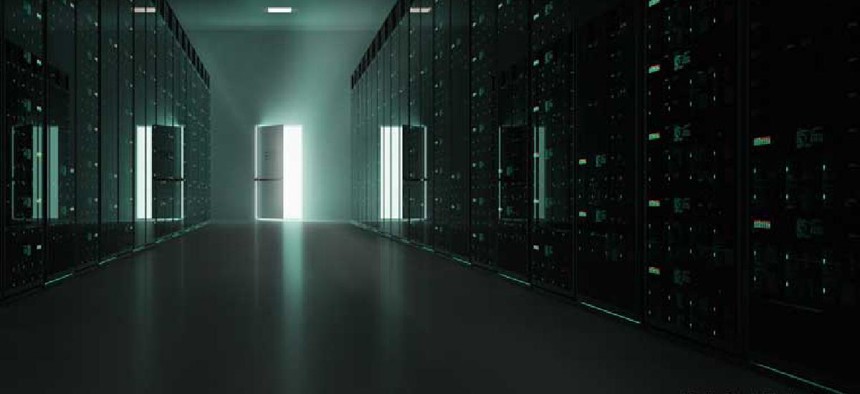How APIs can unlock data and give life to legacy systems


Connecting state and local government leaders
Using application programming interfaces in system modernization allows agencies to quickly adopt new technologies and platforms.
Recently, I thought back to my very first business trip: I remember calling a travel agent to book my flight and hotel, speaking with locals about good places to eat and physically holding onto my business receipts to expense later. For my most recent trip, however, I booked my flight and hotel, read reviews of nearby restaurants and took pictures of my travel receipts to expense instantly -- all from the palm of my hand.
The ways in which we interact with technology on a daily basis has changed drastically in the last few years. And yet, many of our government organizations are still plagued with legacy technology that cannot keep up with this rate of change.
Legacy systems, which form the backbone of many government enterprises, are holding organizations back from leveraging new digital technologies likes cloud, big data, mobile and the internet of things and from creating new experiences for citizens and stakeholders. In addition, because these legacy systems are often a few decades old at best, they are more susceptible to security risks and vulnerabilities than when they were initially built. Without effective and immediate modernization, our most precious government institutions and applications run the risk of becoming obsolete and irrelevant in today’s dynamic world.
The legacy challenge
To combat the legacy challenge, many government agencies have tried to make wholesale replacements of existing systems with more modern technology; however, it’s difficult to justify the time and expense necessary for a rip-and-replace approach. And for agencies that have to adjust to change quickly, it’s very difficult to keep operations afloat while entirely replacing legacy systems.
Agencies have also tried to modernize legacy systems by writing custom code to enable web functionality. However, the majority of legacy systems are connected through point-to-point integrations, a quick and dirty way to get data from systems for projects and applications; unfortunately, this method is wholly inefficient because it means every new project requires new code. In many government organizations, hundreds of systems are tightly integrated, making it difficult to easily retire or modernize existing systems. In one agency alone, a modification in one data field was discovered to change information in 16 different downstream systems.
Existing legacy interfaces were developed in a world of daily batch calls; they are not meaningful in today’s digital channels that require real-time data. Agencies must modernize their systems to ensure the technologies they use provide a competitive edge in the world and, more importantly, meet changing mandates, initiatives and citizen needs.
There is one approach to legacy modernization, however, that will allow agencies to take advantage of their existing systems while ensuring that their current investments don’t go to waste and can be used for future initiatives and projects: API-led connectivity.
Bringing legacy systems to life
Application programming interfaces hold the key to modernizing legacy systems by exposing data in a standard way -- typically using the lightweight REST protocol. APIs protect the integrity of the system, enable secure and governed access and accelerate developer productivity. An API-led approach to system modernization will allow agencies to adapt to modern demands and regulations while increasing their ability to quickly adopt new technologies and platforms.
Using this approach, APIs can be thought of not just as a means of connecting one application to another, but rather as a reusable and productized asset that can be deployed across the organization. For example, the National Finance Center at the Department of Agriculture created a set of relocation APIs to post different types of accounting-related transactions in real-time to an existing legacy financial management system. The department made the APIs discoverable and reusable so that they were deployed across multiple projects, rather than for just the one relocation initiative. The effort saved the agency from creating, building and maintaining hundreds of thousands of dollars worth of point-to-point code -- per interface! Eventually development time was reduced from years to weeks. In truth, the API-led approach to connectivity and integration allows an organic application network to emerge as legacy systems continue to modernize. In this manner, integration can become a differentiator for agencies seeking to curtail expenses and reduce development and maintenance costs across their enterprises.
Reducing risk with a connected government
Along with integration, applied security and governance is of the utmost concern to government organizations. An API-led approach to system modernization allows agencies to address security concerns by design, allowing IT managers to stay in control and practice stronger security and governance across the enterprise. Increasingly, agencies are enforcing governance with out-of-the-box policies, or the creation of new policies. With APIs, these policies can be applied to any service coming out of an agency without making configuration changes to the service itself.
With the dawn of the API revolution, the age of large, monolithic legacy systems that control a government agency’s flow of data is coming to an end. Given the various demands and technology trends affecting the public and private sectors today, government entities are under increasing pressure to modernize their legacy systems. A new API-led approach to integration and connectivity is proving itself as the most efficient, reusable and risk-reducing way of connecting data and applications with one another both in and out of the enterprise. Yet to be answered is the question of where the government will find itself in this new age: Struggling to hold onto archaic modes of point-to-point integration or forging a new path of data security and reusability for generations to come?
NEXT STORY: What Petty Nextdoor Posts Reveal About America




